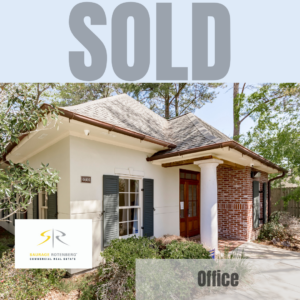Article written by Jim Allen, Sales and Leasing Agent at Saurage Rotenberg Commercial Real Estate
Historic Tax Credit (HTC) is a program of incentives to promote preservation and economic development by making renovation of properties financially feasible. These incentives exist at both the Federal and state levels. The Federal Tax Reform Act of 1986 allows an income tax credit equal to 20 percent of the rehabilitation expenditures for certified historic commercial, agricultural, industrial, or rental residential buildings. The owner may subtract the credit directly from federal income taxes owed by the owner. More than 30 states, including Louisiana, now have historic tax credit programs.
The Louisiana Division of Historic Preservation administers the Federal Rehabilitation Tax Credits in conjunction with the National Park service (NPS) and Internal Revenue Service (IRS) and two State tax credits in conjunction with the Louisiana Department of Revenue (LDR). Inquiries can be made to the Louisiana Office of Cultural Development, Division of Historic Preservation.
Federal Historical Rehabilitation Tax Credit
The Federal Rehabilitation Tax Credit is for 20% of the cost of rehabilitation expenses for an income producing building. The building must be on the National Register of Historic Places or be a contributing building located in a historic district. Examples of qualified expenditures include: building renovation (hard cost), architect fees and most soft cost and construction interest. Examples of non-qualifying expenditures include: site work, new additions to buildings, furniture and fixtures and property acquisition.
Building renovations must comply with the Secretary of the Interior’s Standards for Historical Rehabilitation. There is a 10% tax credit program applicable to buildings build before 1936 and not on the National Register of Historic Places.
State Commercial Tax Credit
Buildings must be a contributing part of a Downtown Development District(DDD) or a Cultural District. The building must be used for income-producing purposes. Eligible expenses must exceed $10,000. The credit may be used in addition to the Federal Historic Rehabilitation tax credits, provided that the most stringent program requirements are met. If the building is mixed-use, the State Residential Tax Credit Program may be combined with the commercial tax credits.
Federal Tax Credits and State Tax Credits can be sold to investors in exchange for equity contributed to the projects. Credits are available the year the building is placed in service and federal credits can be carried back one year and forward 20 years. Federal tax credit investors must remain as a partner in a project for at least five years after construction.
To view this week’s feature property click HERE.
Jim Allen earned his bachelor’s degree from Baylor University in Waco, Texas and his masters from Louisiana State University. In addition to his multiple degrees he has taken numerous coursework in banking, marketing, accounting, and business law. As a complement to his sales experience, Jim also has 25 years experience in commercial real estate financing.
Saurage Rotenberg Commercial Real Estate is a member of the Baton Rouge Area Chamber of Commerce (BRAC); the West Baton Rouge Chamber of Commerce; the Baton Rouge Better Business Bureau; the Louisiana Commercial Data Base (LACDB); and the International Council of Shopping Centers (ICSC). Several agents, on an individual basis, are members of the Society of Industrial and Office Realtors® (SIOR), the Certified Commercial Investment Member Institute (CCIM); the National Association of REALTORS® (NAR); and the Greater Baton Rouge Association of REALTORS® Commercial Investment Division (CID).




